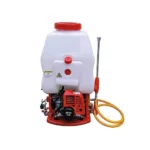Poultry Farming: Hatching Your Agricultural Dream This blog post is your guide to success in the poultry industry. Learn the top strategies for running a profitable poultry farm, including writing a business plan, keeping your birds healthy, feeding your flock frugally, and creating a marketing strategy. You’ll also discover how automation and technology are revolutionizing poultry farming.

Did you know that chickens are the most numerous birds on Earth, with an estimated population of over 34.4 billion? That’s more than three times the number of humans! A significant portion of these chickens are raised in poultry farms to meet our growing demand for eggs and meat.
Poultry farming can be a rewarding venture, providing a steady income and the satisfaction of raising your food. However, it’s not without its challenges. Poultry farmers need to navigate fluctuating market prices, maintain the health and well-being of their birds, and ensure they comply with regulations.
This blog post will crack open the secrets to success in the poultry industry. We’ll explore the top 5 strategies for running a profitable poultry farm, so you can hatch your agricultural dream.
A well-defined business plan is a roadmap to success for your poultry farm. It helps you navigate the complexities of the industry, avoid costly mistakes, and achieve your long-term goals. Here’s how a strong plan can benefit your poultry farm:
A. Clarity and Focus:
- Bird Selection: The plan forces you to research market trends and analyze your resources (land, capital, experience) to choose the most profitable bird type. Are eggs in high demand locally? Do you have the capital for a larger broiler operation? The plan ensures you’re not raising birds for a market that’s saturated.
- Housing Decisions: The plan helps you decide on the most efficient and cost-effective housing system for your chosen bird. Considering factors like cage type, ventilation, and waste management in the plan upfront saves you money on redesigning a poorly planned coop later.
- Financial Security: A sound financial plan lays out all your startup and operational costs, including feed, labor, equipment, and potential veterinary needs. It also factors in projected income from selling eggs or meat. This transparency allows you to secure funding, manage cash flow effectively, and identify areas to maximize profits.
B. Risk Mitigation:
The planning process itself helps you identify potential risks like disease outbreaks, fluctuating feed prices, or market downturns. With these risks anticipated, you can develop mitigation strategies in the plan, such as vaccination programs, supplier contracts, or diversification into value-added products.
C. Growth and Sustainability:
A good business plan isn’t static. It can be a flexible tool to guide your farm’s growth. The initial plan might outline a small-scale operation, but with success, you can revisit the plan to explore expansion, incorporating strategies for scaling up production, hiring additional labor, or even processing your poultry products.
Keeping Your Poultry Farm Healthy: Coop Environment and Diet
A. Clean and Safe Coop
- Ventilation, Lighting, and Space: Ensure your coop is well-ventilated to avoid moisture build-up and ammonia fumes. Provide windows or vents, but avoid drafts. Lighting is important for their natural day/night cycle. Chicks need more heat, while adult chickens don’t need extra lighting unless egg production is desired in the winter. Provide enough space per chicken – overcrowding can lead to stress and illness. A good rule of thumb is 4 square feet per chicken in the coop and 8-10 square feet per chicken in the run.
- Biosecurity: This refers to practices that prevent the introduction and spread of disease. Here are some tips:
- Minimize contact with wild birds and other animals that can carry diseases.
- Clean and disinfect the coop regularly. Use appropriate disinfectants for poultry.
- Provide clean footwear for entering the coop to avoid tracking diseases.
- Quarantine new birds before introducing them to the flock.
B. Balanced Feeding Program
- Feed: Choose a high-quality, age-appropriate feed for your chickens. Chicks have different needs than adult hens or roosters. Layer feed provides the extra calcium needed for strong eggshells. Always follow the feeding instructions on the bag.
- Clean Water: Fresh, clean water is essential for your chickens’ health. Use a waterer that is easy to clean and prevents contamination from droppings. In cold weather, you may need to provide a heated waterer to prevent freezing.
These are all excellent strategies for saving money on poultry feed! Here’s a breakdown of each:
- Buying in bulk: This can be a great way to get a discount, especially if you have the storage space for larger quantities of feed. Just be sure the feed won’t expire before your chickens can eat it.
- Negotiating with suppliers: If you have a larger flock or buy feed regularly, consider talking to feed stores or suppliers about bulk discounts or loyalty programs.
- Choosing the right feed: There are different feeds formulated for chicks, laying hens, broilers, etc. Using the appropriate feed ensures your chickens get the nutrients they need for their specific stage of life, reducing waste and keeping them healthy.
- Minimizing feed waste: Spilled feed attracts pests and can get moldy. Use feeders that minimize waste, like hopper feeders, and adjust the amount of feed you provide daily to avoid overfilling feeders.
Marketing Plan for Your Poultry Farm Produce
Here’s a roadmap to develop a marketing plan and reach your target market:
Know Your Audience:
- Demographics: Age, income, location, family size, etc. Are you targeting health-conscious young professionals, families with children, or high-end restaurants?
- Needs & Preferences: What are their pain points? Do they value organic produce, variety, convenience, or affordability?
Develop Your Brand Identity:
- Unique Selling Proposition (USP): What makes your product special? Locally grown? Sustainable practices? Unique varieties?
- Brand Voice & Messaging: Craft a message that resonates with your audience.
Marketing Channels:
- Website & Social Media: Create a user-friendly website showcasing your products, story, and contact information. Utilize social media platforms like Facebook and Instagram to share updates, recipes, and visually appealing content.
- Local Farmers Markets: Connect directly with consumers and build relationships. Offer samples and highlight the freshness and quality of your produce.
Utilizing Automation and Technology for Poultry Farming
Poultry farming has embraced automation and technology in a big way, transforming how birds are raised and cared for. Here’s a look at some key areas where this is happening:
Automation:
Automatic Feeders and Waterers: These can be lifesavers. They ensure a consistent supply of food and water for your chickens, even if you’re away for a day or two. This reduces the risk of them running out and eliminates the daily chore of refilling feeders and waterers.
Data-Driven Management:

- The Internet of Things (IoT) allows sensors to collect real-time data on everything from feed consumption to bird behavior.
- Farmers can use advanced data analytics to gain insights into flock health, growth patterns, and potential problems.
- This data can be used to optimize feeding regimens, improve bird health, and ultimately boost Feed Conversion Ratio (FCR) – a measure of how efficiently feed is converted to meat or eggs.
Ready to hatch your agricultural dream? Afrimash, a leading provider of poultry farming equipment and supplies in Africa, can help you get started and thrive. Visit their website to explore their products and resources:














